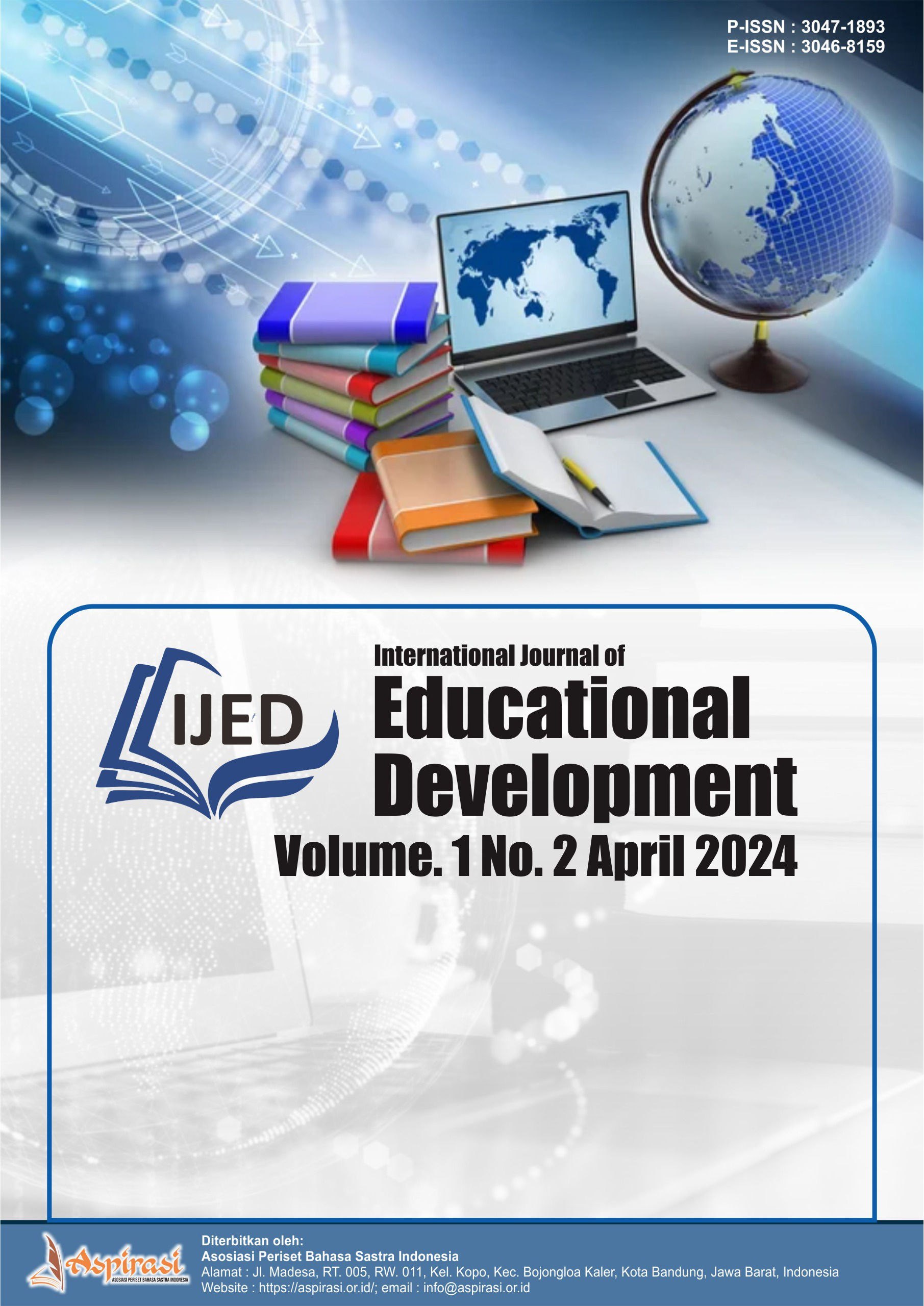The Principle Of Joking In Tweets From The Twitter Account @kaesangp As A Review Of Pragmatics
DOI:
https://doi.org/10.61132/ijed.v1i2.33Keywords:
pragmatics, joke principle, social media, twitter, nudgeAbstract
This research is motivated by the use of social media Twitter which attracts its users with informative and popular content. Twitter has succeeded in reaching users from various groups, from officials to the general public. The features in it allow for unlimited communication. This research focuses on analyzing the principles of jokes in tweets from the Twitter account @kaesangp. The principle of joking is a method that is intended to offend feelings by being friendly or in the form of a basis for making conclusions that are true and false; an intentional violation of the maxims of politeness; and disclosure of taboo things in a speech. In accordance with the focus of the research objectives, pragmatic theory is used and is related to the principle of jokes. This research use desciptive qualitative approach. The listening method and note-taking technique were used as data collection methods. As the end of the research objective, results were obtained in the form of utterances in tweets from the Twitter account @kaesangp which contained utterances with the principle of joking. The research results were obtained from the classification and decomposition based on the type of joking speech, including satire, banter and jokes. The benefit of this research is to find out the principles of jokes contained in the tweets of related Twitter accounts.
References
Anugratami, F., Christin, M., & Primadani, B. (2015). Pengaruh Pengunaan Media Sosial Twitter Terhadap Motivasi Followers Pada Akun @Merryriana (Periode 01 December 2014-17 JANUARI 2015). 2(2), 2256–2261.
Arisnawati, N. (2020). Gaya Bahasa Sindiran Sebagai Bentuk Komunikasi Tidak Langsung Dalam Bahasa Laiyolo. MEDAN MAKNA: Jurnal Ilmu Kebahasaan Dan Kesastraan, 18(2), 136. https://doi.org/10.26499/mm.v18i2.2314
Chaer, A. (2014). Linguistik Umum. PT. Rineka Cipta.
Handayani, N., & Ely, D. Q. M. (2020). Tindak Tutur Ironi dan Kelakar dalam Acara Rumpi di TransTV. Totobuang: Jurnal Ilmiah Kebahasaan Dan Kesastraan, 8(2), 311–325.
Hasiholan, A., Cholissodin, I., & Yudistira, N. (2022). Analisis Sentimen Tweet Covid-19 Varian Omicron pada Platform Media Sosial Twitter menggunakan Metode LSTM berbasis Multi Fungsi Aktivasi dan Glove. Jurnal Pengembangan Teknologi Informasi Dan Ilmu Komputer, 6(10), 4653–4661.
Kelakar. (2023). KBBI Online. https://kbbi.web.id/kelakar
Leech, G. (1993). Prinsip-Prinsip Pragmatik. Universitas Indonesia.
Lelucon. (2023). KBBI Online. https://kbbi.web.id/lelucon
Maharani, A. T., & Utomo, A. P. Y. (2020). Analisis Tindak Tutur Lokusi dalam Akun Twitter Fiersa Besari. METAFORA: Jurnal Pembelajaran Bahasa Dan Sastra, 6(1), 86–100. http://journal.um-surabaya.ac.id/index.php/JKM/article/view/2203
Mahsun. (2012). Metodologi Penelitian Bahasa: Tahapan Strategi, Metode, dan Tekniknya. Rajawali Pers.
Marwuni, W. T., & Utomo, A. P. Y. (2020). Analisis Tindak Tutur Ilokusi Di Cuitan Akun Twitter @Sudjiwotedjo Pada Bulan Februari 2020 []. Kadera Bahasa, 12(1), 23–33. https://doi.org/10.47541/kaba.v12i1.122
Maulida, F., Rozi, F., & Pratama, H. (2022). Creation of Humorous Situation By Flouting Conversational Maxims Accompanied By Facial Expression i n “ Friends .” 12(1), 76–86.
Muhartiningsih, S. (2014). Analisis prinsip kelakar dan prinsip ironi pada dialog film cinta dalam kardus karya sutradara salman aristo dan bahan pembelajaran di sma.
Olok. (2023). KBBI Online. https://kbbi.web.id/olok
Paper, C. (2018). Banter Politeness from Cultural Perspective ( Analysis of Palembang Malay Language ). 2018, 411–418. https://doi.org/10.18502/kss.v3i9.2702
Rezeki, S. R. I., Restivian, Y., & Zahara, R. (2020). Penggunaan Sosial Media Twitter dalam Komunikasi Organisasi (Studi Kasus Pemerintahan Provinsi DKI Jakarta dalam Penanganan Covid-19. Journal Of Islamic and Law Studies, 4(2), 63–78.
Rheingold, H. (1993). The Virtual Community: Homesteading on Electronic Frontier.
Satori, D., & Komariah, A. (2010). Metodologi Penelitian Kualitatif (2nd ed.). Alfabeta.
Saussure, F. de. (1916). PengantarLinguistik Umum.
Sindiran. (2023). KBBI Online. https://kbbi.web.id/sindiran
Subiyatningsih, F. (2017). Prinsip Kelakar Dan Prinsip Daya Tarik Dalam Wacana Cakcuk (Joke and Attraction Principles in Cakcuk Discourse). Widyaparwa, 45(1), 80–92. https://doi.org/10.26499/wdprw.v45i1.152
Sudaryanto. (1993). Metode dan Aneka Analisis Bahasa (Pengantar Penelitian Wahana Kebudayaan Secara Linguistik). Duta Wacana University Press.
Sudaryanto. (2015). Metode dan Aneka Analisis Bahasa (Pengantar Penelitian Wahana Kebudayaan Secara Linguistik). Sanata Dharma University Press.
Susetyo, A. M., & Fatmawati, M. D. (2016). Keragaman Kelakar Film Yowis Ben Karya Bayu Skak. Ilmiah Program Studi Pendidikan Bahasa Dan Sastra Indonesia, 7, 1–23.
Tarigan, H. G. (2015). Pengajaran Pragmatik. CV Angkasa.
Tasyarasita, A. Z., & Wibowo, A. H. (2022). Flouting of Conversational Maxims Analysis of Characters and Social Contexts in " All The Bright Places " Movie. 5(2), 59–73.
Downloads
Published
How to Cite
Issue
Section
License
Copyright (c) 2024 International Journal of Educational Development

This work is licensed under a Creative Commons Attribution-ShareAlike 4.0 International License.





